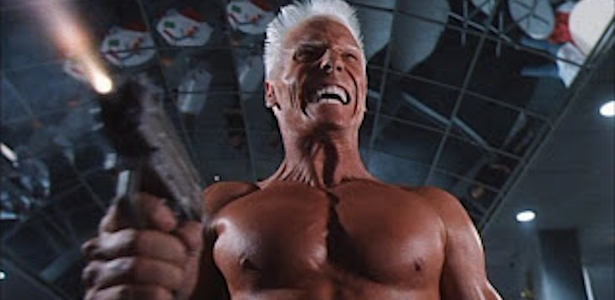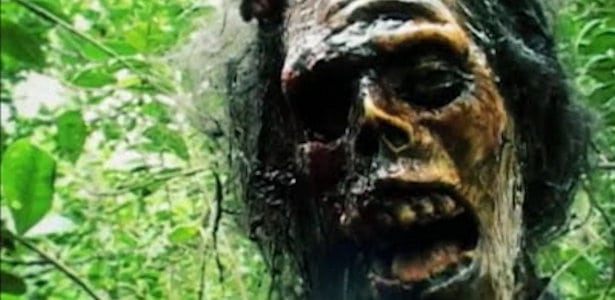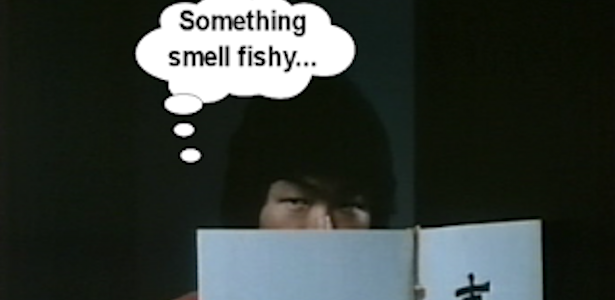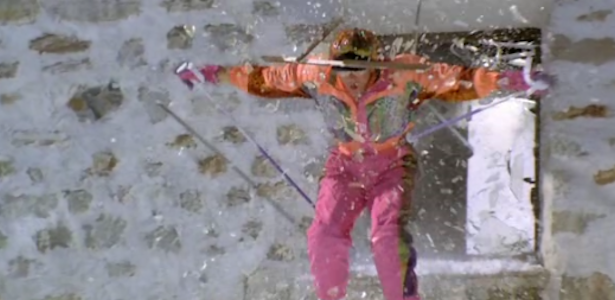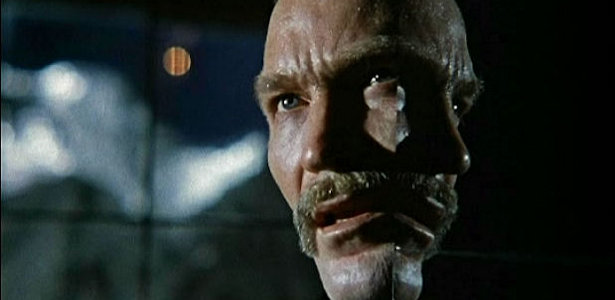“Time is at once the most valuable, and the most perishable of all our possessions.” - John Randolph
The passage of time possesses a certain cruel duality. A perfect example is our latest unmade film examination, THE MINING CAMP ENCOUNTER. Time was certainly a friend to the full page ad in Variety from 1981 that I spied in 2010. Nearly 30 years after the fact, the drawn image of a monster's hand silencing a human face was doing exactly what it was intended to do – draw interest. However, it didn’t come from a potential producer, but a fan curious as to why this film never got made. With the help and nudging of Bill Picard (the internet’s greatest detective), an effort was made to contact the folks involved in this unmade movie.
And here is where it is exhibited that time can also certainly be the enemy. In August 2011, Bill emailed me with the unfortunate news that he discovered Marc Fagone, the film’s writer and producer, had passed away in 2003 from cancer. Hoping there was a story still to be told, I sent Donna Fagone, Marc’s widow, a letter expressing my condolences and inquiring if she knew anything about the three-decades-old project. Much to my surprise, Mrs. Fagone replied via email and gave me a great deal of information about this mysterious project. You see, not only was it her husband’s pet project for several years, but it was also the very thing that brought the two of them together.
Marc Douglas Fagone was born in 1949 in Boston, Massachusetts. Like any healthy child growing up in the 1950s, he was a movie watcher and enjoyed horror thanks to his mother. “Marc and his mother both loved horror films and watched them together while he was growing up,” Donna Fagone says. As an adult, his occupation was that of a construction contractor and carpenter. Fagone displayed his creative side as a member of several bands (The Breakaways, Kaliope). It was in the late 1970s that Fagone began toying with the idea of filmmaking. His first copyrighted script was SPY IN THE KEY OF C from 1978/79. “It was a suspense/mystery/whodunit set in Las Vegas and the main character was a Las Vegas male singer. He wrote two songs for it as well,” Mrs. Fagone reveals of this earlier unmade film project.
Perhaps sensing the world might not be ready for a Las Vegas-Philip Marlowe mix (it might still not be), the now Pennsylvania-based Mr. Fagone opted to go the more conventional route with a horror picture as his introductory effort. After all, a fellow Pennsylvanian (George Romero) had struck gold just over a decade earlier with NIGHT OF THE LIVING DEAD (1968), a film that eschewed the Hollywood system to great success. So THE MINING CAMP ENCOUNTER was born.
As far as the plot was concerned, Fagone drew his inspiration from one of the most newsworthy events to happen in the United States in the 1970s that occurred within his then-current home state – the Three Mile Island disaster. “I do know the main plot was that after Three Mile Island Nuclear Reactor accident in Pennsylvania,” Donna discloses, “some nuclear waste seeped into a coal mine and came into contact with a small animal (maybe lizard like) and became a mutant creature that began attacking the coal miners. Enter the female news reporter and the man that helps her solve the mystery.”
THE MINING CAMP ENCOUNTER opening
(click on all documents to enlarge):
Press release for the film:
 |
| Xerox copies of location Polaroids |
With a script and budget in place, Fagone set about trying to obtain financing for his project. With his own money, he paid for the art for the aforementioned Variety full page advertisement. Although never formally finalized, there had been talks with Hungarian immigrant Andrew Szitanyi to direct the picture. And, in another move showing Fagone’s innate understanding of the exploitation aspect of filmmaking, he had considered a popular Playboy model as the film’s protagonist. “The actress under consideration for the lead female role was Barbie Benton,” Donna reveals. However, Benton never officially committed to the project. Fagone did receive a letter of commitment from actress Jacqui Evans, who was previously seen as one of the science-made models in LOOKER (1981).
Letter of interest from Jacqui Evans' agent:
Fagone's level of detail and attention extended to all facets of the project, including mapping out the area of their chosen location for the mine.
Mine shooting location map:
One element of planning that was given a lot of attention was the design of the mutant monster. Fagone’s files show several pages of early drafts by an unknown artist (possibly Fagone himself) from 1981.
Early FX sketches:
Bart Mixon's FX sketches:
 |
| Cover page of Fagone's detailed 9-page budget |
“Marc was trying to raise a million dollars to produce the film. He had a budget completed,” Donna explains of her husband’s attempts to secure capital. “I know that he put thousands of his own money into the project but did not have resources to invest heavily so the risk would fall on the investor. I was told that it was easier to do this back then because failures and losses could be written off. (VJ – via popular tax shelter laws) But I think the fact that Marc didn't have funds to ‘risk’ himself caused some of the close deals to fail. There were a couple investors that said ‘you put up half and I'll put up the other half’ but Marc didn't have that kind of money.”
Wishy-washy producers are a dime-a-dozen in this industry, but no one can top the billionaire oil baron somehow related to the Saudi royal family that Fagone interested in the project. “One interesting attempt and unique opportunity had been with the wealthy Sheik that was upsetting some people in the U.S. by going around and donating money and financing many things in the early 80s,” Fagone’s wife discloses. “His name was Mohammed al-Fassi. He was looking for positive press in the U.S.” (Al-Fassi had made national news in 1978 when he drew the ire of Beverly Hills residents by buying a multi-million dollar mansion, painting it pea green and filling the grounds with realistic, sexually explicit nude statues. The house mysteriously caught fire in 1980, resulting in the affluent neighbors pouring into the street and – no joke – chanting “burn, burn, burn” as flames engulfed the eyesore. Al-Fassi passed away in 2002.)
Fagone letter to Al-Fassi:
“[Al-Fassi’s] right hand man told Marc that if Marc could get some positive press about how kind the Sheik was, that they would consider investing. Marc did get his home newspaper in Massachusetts to write up a story and al-Fassi set up a meeting with Marc at resort in Florida. Marc traveled to Florida to meet but when Marc arrived, was told the Sheik and his staff had suddenly left Florida and returned to their homeland (i.e.; chased out). We never knew if this [funding offing] was true or if the entire thing had been a scam for publicity for the Sheik all the time.”
Article Fagone got published
on Al-Fassi's behalf:
Fagone's 1980 copyright form:
 |
| Original painted artwork |
Indeed, Marc and Donna eventually married and had a daughter of their own. So while we might mourn the loss of another “mutant monster on the loose” movie, it appears THE MINING CAMP ENCOUNTER existed for a better reason altogether as the couple brought together by the project spent the next 20 years together. “We miss Marc very much and talk about him every day in our family,” Donna Fagone says of her late husband. “He was a tireless worker, very resilient and always had an idea or project in the works.”




